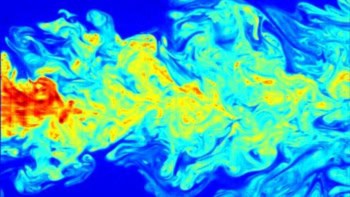Physicists in Germany claim to have developed a new computer model that can describe how human languages evolve over time. Dietrich Stauffer and Christian Schulze of Cologne University have taken techniques used by biologists to describe evolution and applied them to the rise and fall of languages. In particular they find that the size distribution of languages - a measure of the relative popularity of different languages - can be described by a nearly "log-normal" curve (arXiv.org/abs/cond-mat/0411162).

All languages change over time, with some languages disappearing because they are not spoken by enough people. Stauffer and Schulze describe a particular language by a string of 8 or 16 bits, where each bit can equal 0 or 1, and start their simulations with one person speaking language zero (all bits equal to zero). Two languages are different from each other if they differ by at least one bit.
The model works as follows: After a given time, this person produces one offspring who speaks a language that might differ from that spoken by their parent by one bit: the possibility of such a mutation occurring is governed by a probability p. The model also allows for the possibility of a person dying during any iteration: this is governed by a factor called the “carrying capacity” in biology. Lastly, it is also possible that the parent decides to start speaking a different language: this is determined by several factors including the carrying capacity and the fraction of the population who already speak that language.
The Cologne physicists found that, for a sample of 10 million people, high mutation rates are needed to ensure that no single language dominates. This finding agrees with data on real languages, as does the prediction that the size distribution of languages is close to a “log-normal” distribution (see figure).
“Our model is more realistic than other similar models we know of since it allows for numerous languages, instead of only two,” say Stauffer and Schulze. “In these models, only one language survived because it was assumed to be superior to the other. We, on the other hand, have regarded all languages as being equally fit.”
However, it remains to be seen how the work will be received in the linguistics community. “Linguistics is a relatively new topic for physics and complex systems theory and any tentative way to understand and quantify it is useful and welcome,” says Marco Patriarca of the Helsinki University of Technology. “However, while the model Stauffer and Christian Schulze is interesting and worth investigating, it also seems preliminary.”



